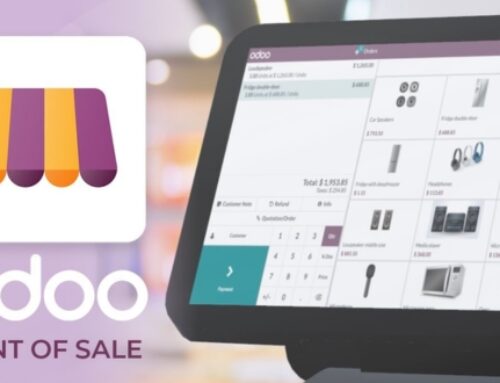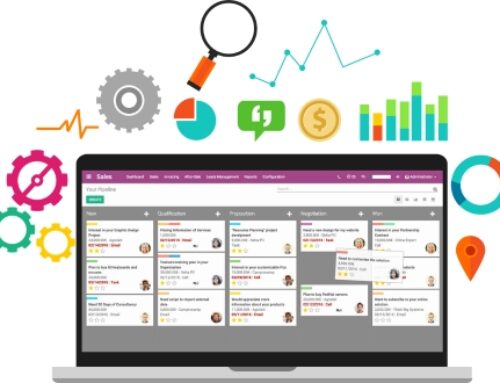In today’s fast-paced business environment, efficient procurement processes are essential for maintaining competitiveness and achieving operational excellence. Recognizing the significance of streamlined procurement operations, Odoo offers a robust Purchases module as part of its comprehensive business management suite.
Odoo Purchases is a powerful tool designed to optimize and simplify the entire procurement process, from requisition to payment. With its user-friendly interface and intuitive features, Odoo Purchases empowers businesses to automate routine tasks, streamline workflows, and make data-driven decisions.
One of the key advantages of Odoo Purchases is its ability to centralize vendor management. Businesses can maintain a comprehensive database of vendors, track performance metrics, and streamline communication – all within the Odoo environment. This centralized approach ensures transparency, accountability, and efficient collaboration with suppliers.
Moreover, Odoo Purchases offers automated purchase order generation, enabling businesses to set predefined rules for reorder levels and trigger procurement processes automatically. This automation helps minimize stockouts, reduce lead times, and optimize inventory levels, ultimately leading to cost savings and improved operational efficiency.
Integration with other modules, such as Inventory and Accounting, further enhances the functionality of Odoo Purchases. Real-time updates on stock levels, order statuses, and financial data provide businesses with valuable insights into their procurement activities, facilitating informed decision-making.
In addition to automation and integration, Odoo Purchases also prioritizes user experience and customization. Businesses can tailor workflows, reports, and dashboards to suit their specific requirements, ensuring a personalized and efficient procurement experience.
Overall, Odoo Purchases empowers businesses to streamline procurement processes, optimize inventory management, and foster stronger relationships with suppliers. By leveraging the capabilities of Odoo Purchases, businesses can unlock new levels of efficiency, agility, and cost-effectiveness in their procurement operations.
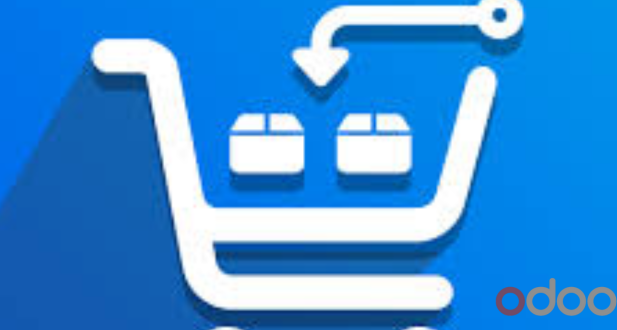
Key Features
Odoo Purchases module comes equipped with a myriad of features designed to streamline and enhance the entire procurement process. From requisition to payment, these features empower businesses to manage their purchases efficiently and make data-driven decisions. Let’s delve into the key features that make Odoo Purchases a powerful tool for procurement optimization.
- Vendor Management:
Odoo Purchases centralizes vendor information, providing businesses with a comprehensive database to manage their supplier relationships. From contact details to performance metrics, businesses can efficiently track and evaluate vendor performance. This centralized approach fosters transparency, accountability, and effective communication with suppliers.
- Automated Purchase Order Generation:
One of the standout features of Odoo Purchases is its ability to automate the generation of purchase orders. Businesses can set predefined rules for reorder levels, ensuring that procurement processes are triggered automatically when stock reaches specified thresholds. This automation minimizes the risk of stockouts, reduces lead times, and optimizes inventory levels.
- Requisition Management:
Odoo Purchases facilitate the creation and management of purchase requisitions. Employees can submit requisitions for needed items, and managers can review, approve, or reject these requests. This structured requisition workflow ensures that procurement aligns with organizational needs and budgets.
- Integration with Inventory:
Seamless integration with the Odoo Inventory module enhances the functionality of Odoo Purchases. Businesses can access real-time information on stock levels, track order statuses, and gain insights into inventory performance. This integration ensures that procurement decisions are informed by accurate and up-to-date inventory data.
- Customizable Workflows:
Odoo Purchases prioritizes flexibility and customization. Businesses can tailor procurement workflows to match their specific requirements. Whether it’s custom approval processes, unique reporting needs, or specialized dashboards, Odoo Purchases can be configured to accommodate diverse business scenarios.
- Real-time Collaboration:
The module supports real-time collaboration among team members involved in the procurement process. From creating purchase orders to reviewing requisitions, stakeholders can collaborate seamlessly within the Odoo environment. This feature enhances communication and ensures that everyone is on the same page throughout the procurement journey.
- Invoice Validation and Tracking:
Odoo Purchases streamlines the invoice validation process. Users can validate and track supplier invoices efficiently, helping businesses manage their cash flow effectively. The module also integrates with Odoo Accounting, ensuring a seamless transition from procurement to financial management.
- Supplier Price Lists and Product Catalogs:
Odoo Purchases allows businesses to maintain supplier price lists and product catalogs. This feature aids in comparing prices, negotiating better deals, and making informed purchasing decisions. Having access to comprehensive supplier information enhances the strategic aspect of procurement.
- Multi-Company Support:
For businesses operating across multiple entities, Odoo Purchases provides multi-company support. This feature enables centralized procurement management for diverse business units, ensuring consistency and efficiency in procurement processes.
- Audit Trails and Reporting:
Odoo Purchases offers robust audit trails and reporting capabilities. Businesses can track changes made to purchase orders, monitor procurement activities, and generate insightful reports. These features contribute to accountability and facilitate data-driven decision-making.
In conclusion, the key features of Odoo Purchases collectively contribute to a comprehensive and efficient procurement management solution. From vendor management to automated processes and customizable workflows, Odoo Purchases empowers businesses to optimize their procurement operations, reduce costs, and enhance overall efficiency in the supply chain.
Procurement Workflow in Odoo: Streamlining Purchasing Processes
In the dynamic landscape of business operations, efficient procurement management is crucial for ensuring a smooth supply chain. Odoo, a comprehensive business management software, offers robust tools for procurement workflows, enabling organizations to streamline purchasing processes and optimize resource utilization.

- Requisition Generation:
The procurement process begins with the creation of purchase requisitions. In Odoo, users can easily generate requisitions, specifying the products or services required. This step serves as a formal request for the procurement of goods, initiating the workflow.
- Purchase Order Creation:
Upon approval of the purchase requisition, Odoo allows users to create purchase orders seamlessly. The system automates the generation of purchase orders based on predefined rules and requisition details, ensuring accuracy and efficiency in the procurement workflow.
- Supplier Management:
Odoo provides a centralized platform for managing supplier information. Users can maintain a comprehensive database of suppliers, including contact details, product catalogs, and pricing information. This supplier management feature enhances transparency and facilitates informed decision-making during procurement.
- Integration with Inventory:
A key strength of Odoo’s procurement workflow lies in its seamless integration with the Inventory module. Real-time synchronization of inventory levels and order statuses enables organizations to make data-driven decisions. This integration ensures that procurement aligns with current stock levels, preventing overstocking or stockouts.
- Request for Quotation (RFQ):
To optimize the procurement process, Odoo allows users to send RFQs to multiple suppliers. This feature promotes healthy competition among suppliers, leading to better pricing and terms. Users can compare quotations and select the most favorable offers, contributing to cost-effective procurement.
- Approval Hierarchy:
Odoo’s procurement workflow incorporates an approval hierarchy to maintain control and accountability. Purchase requisitions and orders can undergo approval processes based on predefined rules and user roles. This ensures that all procurement activities align with the organization’s policies and standards.
- Receipt and Inspection:
Upon receiving the ordered goods, the next step in the procurement workflow involves receipt and inspection. Odoo facilitates the recording of goods received, allowing users to verify the quantity and quality against the purchase order. This step ensures compliance with the agreed-upon terms with suppliers.
- Invoice Verification and Payment:
Efficient invoice verification is essential for accurate financial management. Odoo streamlines this process by allowing users to match received goods with supplier invoices. Once verified, the system facilitates prompt payment, contributing to healthy supplier relationships.
- Reporting and Analytics:
Odoo provides robust reporting and analytics tools for evaluating procurement performance. Users can generate reports on purchase orders, supplier performance, and other key metrics. These insights empower organizations to identify areas for improvement and make informed decisions in future procurement activities.
- Customization and Scalability:
One of the notable advantages of Odoo’s procurement workflow is its flexibility and scalability. Organizations can customize the workflow to align with specific business requirements. As business needs evolve, Odoo can adapt, ensuring that the procurement process remains efficient and effective.
In conclusion, Odoo’s procurement workflow offers a comprehensive solution for organizations seeking to optimize their purchasing processes. From requisition generation to invoice verification, Odoo streamlines each step, promoting efficiency, transparency, and informed decision-making. The seamless integration with other Odoo modules enhances the overall effectiveness of the procurement workflow, making it a valuable tool for businesses of all sizes.
Reporting and Analytics in Odoo: Enhancing Business Intelligence
In the dynamic realm of business management, the ability to harness data for strategic decision-making is paramount. Odoo, an integrated business management software, empowers organizations with robust reporting and analytics capabilities. This comprehensive suite enables users to derive meaningful insights, optimize processes, and drive business growth.
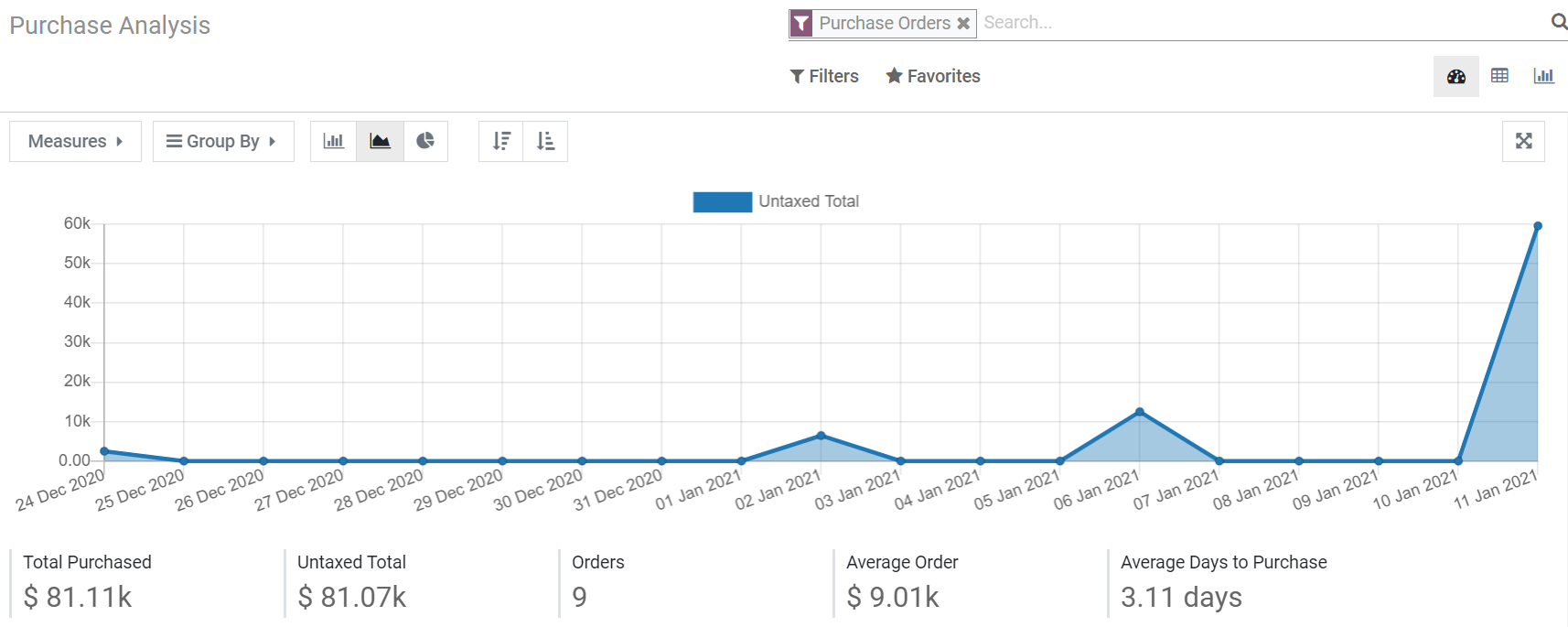
- Overview of Reporting in Odoo:
Odoo provides a versatile reporting framework that covers various aspects of business operations. From financial reports to sales analytics, users can access a wide array of predefined reports. These reports offer a snapshot of key performance indicators (KPIs), allowing stakeholders to monitor the health of the organization.
- Customizable Dashboards:
A standout feature of Odoo’s reporting capabilities is the provision of customizable dashboards. Users can create personalized dashboards tailored to their specific roles and responsibilities. This flexibility ensures that each user has access to relevant metrics and visualizations, enhancing overall user experience.
- Financial Reporting:
In the realm of financial management, Odoo offers a comprehensive suite of reports. Users can generate balance sheets, income statements, cash flow statements, and more. The real-time nature of these reports empowers financial teams to make informed decisions and maintain accurate financial records.
- Sales and CRM Analytics:
For sales teams, Odoo provides analytics tools that offer insights into sales performance, lead conversion rates, and customer interactions. These analytics facilitate sales forecasting, allowing organizations to anticipate market trends and adapt their strategies accordingly.
- Inventory and Procurement Reports:
Effective inventory management is critical for operational efficiency. Odoo’s reporting features extend to inventory and procurement, providing insights into stock levels, order statuses, and supplier performance. These reports enable organizations to optimize inventory planning and maintain healthy supply chains.
- Project Management Analytics:
In project-centric industries, Odoo’s reporting capabilities extend to project management. Users can generate reports on project progress, resource allocation, and budgetary performance. These analytics contribute to efficient project planning and execution.
- HR and Employee Performance Reports:
Odoo’s reporting tools encompass human resources, offering insights into employee performance, attendance, and recruitment metrics. These reports assist HR professionals in workforce planning, talent management, and performance evaluation.
- eCommerce Analytics:
For businesses engaged in eCommerce, Odoo provides analytics tools that delve into website performance, online sales, and customer behavior. These insights are invaluable for eCommerce managers seeking to enhance the online shopping experience and boost revenue.
- Integration with Business Intelligence (BI) Tools:
Recognizing the diverse needs of businesses, Odoo allows integration with popular Business Intelligence (BI) tools. This interoperability enables users to leverage advanced analytics and visualization tools, further expanding their capacity for data-driven decision-making.
- Accessibility and Collaboration:
Odoo’s reporting and analytics features are accessible through a user-friendly interface. The cloud-based nature of Odoo ensures that stakeholders can access reports from anywhere, fostering collaboration among teams. This accessibility promotes a data-driven culture within the organization.
- Real-time Data Updates:
An essential aspect of Odoo’s reporting capabilities is the real-time data updates. As transactions occur and data is entered into the system, reports reflect these changes instantaneously. This real-time visibility into business operations enhances agility and responsiveness.
- Predictive Analytics:
Odoo’s reporting tools extend beyond historical data analysis to include predictive analytics. Through machine learning algorithms, users can gain insights into future trends, allowing for proactive decision-making and strategic planning.
In conclusion, Odoo’s reporting and analytics capabilities stand as a cornerstone of its value proposition. The platform empowers organizations to transform raw data into actionable insights, facilitating informed decision-making at every level. Whether in financial management, sales, inventory, or human resources, Odoo’s comprehensive suite of reports and analytics tools contributes to organizational agility, efficiency, and growth.
Vendor Collaboration and Communication

Effective vendor collaboration and communication are crucial aspects of successful Odoo purchases. Building strong relationships with vendors fosters trust, transparency, and efficiency throughout the procurement process. This document outlines key strategies to enhance collaboration and communication, ensuring smooth Odoo acquisition and implementation.
Pre-Purchase Stage:
- Vendor Selection:
- Shortlist: Involve key stakeholders in defining selection criteria and shortlisting vendors based on expertise, compatibility, and reputation.
- Request for Information (RFI): Issue an RFI outlining project requirements and expectations. This facilitates vendor understanding and tailored responses.
- Clarification Meetings: Schedule meetings to clarify any ambiguities and answer vendor questions. This fosters open communication and reduces misunderstandings.
- Negotiation and Contract Formation:
- Collaborative Negotiation: Engage in collaborative negotiations, focusing on mutually beneficial solutions rather than solely on price.
- Clear Communication: Clearly communicate expectations, timelines, and deliverables within the contract to avoid future disputes.
- Joint Planning Meetings: Conduct joint planning meetings to establish a shared understanding of the project scope, timelines, and communication channels.
Post-Purchase Stage:
- Onboarding and Training:
- Joint Onboarding: Collaborate with the vendor to develop a comprehensive onboarding plan for your team, ensuring they understand Odoo functionality and best practices.
- Open Communication Channels: Establish clear communication channels for ongoing support and troubleshooting. Encourage open communication to address any issues promptly.
- Regular Feedback: Provide regular feedback to the vendor on their performance and identify areas for improvement. Encourage them to do the same, fostering a continuous improvement culture.
- Project Management and Collaboration Tools:
- Utilize Project Management Tools: Implement project management tools like Odoo Projects or Trello to track progress, assign tasks, and share updates with the vendor team.
- Collaborative Documents: Utilize shared online documents like Google Docs or Microsoft Teams to collaborate on project documents, specifications, and plans in real-time.
- Regular Status Meetings: Schedule regular status meetings to discuss project progress, address roadblocks, and ensure alignment on project goals.
- Building Long-Term Relationships:
- Open Communication: Maintain open and transparent communication throughout the project lifecycle, fostering trust and collaboration.
- Joint Problem-Solving: Approach challenges collaboratively, working together to find solutions that benefit both parties.
- Regular Reviews: Conduct periodic reviews to assess vendor performance and identify opportunities for improvement. This demonstrates your commitment to the relationship.
By implementing these strategies, you can cultivate strong vendor collaboration and communication, leading to successful Odoo purchases and a positive long-term partnership with your chosen vendor. Remember, a collaborative approach fosters trust, transparency, and efficiency throughout the procurement process, ensuring a smooth and successful Odoo implementation.
Odoo Implementation and Customization
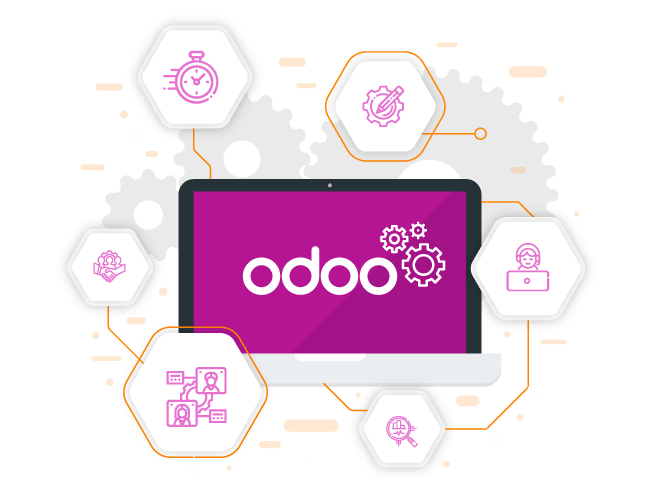
Odoo, an open-source Enterprise Resource Planning (ERP) system, offers a wide range of modules catering to various business needs. However, successful implementation and utilization of Odoo often require customization to fit your specific business processes. This document outlines key considerations for both implementation and customization scenarios.
Implementation:
- Needs Assessment and Gap Analysis:
- Define Requirements: Clearly define your business needs and desired functionalities for Odoo. This helps target the specific modules and features that best suit your requirements.
- Identify Gaps: Analyze existing business processes and identify areas where Odoo can improve efficiency and automation. This helps prioritize customization needs.
- Data Migration and Configuration:
- Data Preparation: Ensure your existing data is clean and organized for smooth migration to Odoo. This minimizes potential issues during the transition.
- Module Configuration: Configure pre-existing Odoo modules to match your specific workflows and data structures. This leverages existing functionalities without unnecessary customization.
- Testing and User Training:
- Thorough Testing: Conduct rigorous testing of the implemented Odoo system to ensure data integrity, functionality, and user-friendliness.
- Comprehensive Training: Provide comprehensive user training on Odoo functionalities, best practices, and troubleshooting techniques. This fosters user adoption and maximizes system utilization.
Customization:
- Feasibility Assessment:
- Evaluate Benefits and Risks: Weigh the potential benefits of customization against the associated risks, including development costs, maintenance challenges, and compatibility issues with future Odoo updates.
- Explore Alternative Solutions: Consider alternative solutions like third-party modules or existing Odoo functionalities that can address your needs before pursuing custom development.
- Customization Scope and Planning:
- Define Scope Clearly: Clearly define the specific functionalities and features requiring customization. This helps manage development costs and avoid scope creep.
- Detailed Planning: Create a detailed plan outlining development timelines, resource allocation, and key milestones for the customization project.
- Development and Deployment:
- Experienced Developers: Ensure the development team possesses expertise in Odoo and relevant programming languages to ensure code quality and maintainability.
- Version Control and Documentation: Use version control systems and maintain thorough documentation throughout the development process to track changes and facilitate future maintenance.
- Testing and Integration:
- Rigorous Testing: Implement rigorous testing procedures to ensure the custom functionalities function as intended and integrate seamlessly with existing Odoo modules.
- Post-Deployment Monitoring: Monitor the performance and stability of the customized Odoo system after deployment to identify and address any potential issues.
A successful Odoo implementation involves a strategic blend of utilizing existing functionalities and targeted customizations. By carefully assessing needs, planning efficiently, and executing with care, you can leverage Odoo’s capabilities to streamline your business processes and achieve significant improvement in operational efficiency. Remember, Odoo thrives on collaborative efforts between your organization and the chosen implementation partner, ensuring a smooth and successful journey towards a tailored and optimized business management system.
Case Studies: Real-world Odoo Implementations
Odoo’s versatility shines through in diverse industry applications. Exploring real-world implementations helps potential users understand its potential and the specific challenges addressed by various organizations. Here are two diverse case studies showcasing Odoo’s capabilities:
- Case Study 1: Streamlining Operations for a Manufacturing Company
Company: ABC Manufacturing, a mid-sized company specializing in custom furniture production.
Challenges:
- Inefficient inventory management leading to stockouts and production delays.
- Manual order processing creates errors and hinder order fulfillment.
- Lack of real-time production data hindering effective decision-making.
Solution:
- Implementation of Odoo Inventory and Manufacturing modules:
- Centralized inventory management with real-time stock levels.
- Automated material requisitions and purchase orders.
- Work order creation and management with production tracking.
Customization:
- Developed a custom module to track raw material quality control processes.
Results:
- Reduced stockouts by 20% through improved inventory forecasting and planning.
- Increased order fulfillment accuracy by 15% through automated order processing.
- Gained real-time insights into production progress, enabling data-driven decisions for optimizing production schedules and resource allocation.
- Improved product quality with the custom quality control module.
- Case Study 2: Enhancing Customer Service for a Retail Chain
Company: DEF Retail, a regional chain of grocery stores.
Challenges:
- Difficulty managing customer data across multiple stores.
- Inefficient point-of-sale (POS) system leading to long checkout lines and customer dissatisfaction.
- Limited customer loyalty program hindering customer engagement.
Solution:
- Implementation of Odoo CRM, POS, and Loyalty modules:
- Centralized customer data management across all stores.
- Streamlined POS system with faster checkout times and improved customer experience.
- Implemented a loyalty program offering points and rewards for customer purchases.
Customization:
- Developed a custom module for store managers to track product movement and optimize inventory levels based on customer preferences and local demand.
Results:
- Improved customer service with faster checkouts and personalized interactions.
- Increased customer satisfaction through a user-friendly POS system and loyalty program.
- Enhanced data-driven decision making with access to centralized customer data and insights into purchasing trends.
- Reduced inventory holding costs through optimized stock management based on local customer preferences.
These two case studies demonstrate the diverse applications of Odoo across industries. By strategically integrating core modules and leveraging targeted customizations, organizations can address specific business challenges, enhance efficiency, and achieve their strategic goals. Exploring real-world implementations allows potential users to visualize how Odoo can adapt to their unique needs and pave the way for a successful implementation journey.
Future Developments and Updates in Odoo

Odoo, the open-source ERP platform, is constantly evolving, aiming to offer users an increasingly robust and user-friendly solution. This document explores some potential future developments and updates that might shape the Odoo landscape in the coming years, based on industry trends and insights:
- Enhanced Artificial Intelligence (AI) Integration:
- Intelligent Automation: Expect to see deeper integration of AI for automating repetitive tasks within various modules.
- AI-powered data entry can streamline processes like invoice processing and customer service.
- Predictive maintenance modules might anticipate equipment failures and automate maintenance scheduling.
- Data-driven Insights and Decision Making: AI-powered analytics can extract valuable insights from vast datasets within Odoo.
- Business intelligence tools might leverage AI to provide predictive sales forecasts, optimize inventory management, and identify potential customer churn.
- AI-powered recommendations can suggest personalized product offerings or relevant marketing campaigns.
- Continued Focus on User Experience (UX) and User Interface (UI):
- Intuitive and Personalized Interfaces: Odoo’s interface might evolve towards a more user-centric design, adapting to individual preferences and roles.
- Role-based dashboards might display information relevant to specific user functions.
- Customizable dashboards could allow users to prioritize and arrange information based on their needs.
- Enhanced Mobile App Functionality: Expect advancements in the Odoo mobile app, offering greater functionality and a seamless experience across all devices.
- Offline functionality might allow users to access critical data and perform basic tasks even without internet connectivity.
- The mobile app could potentially integrate with wearable technology for on-the-go data access and task management.
- Blockchain Integration and Security Enhancements:
- Improved Data Security and Transparency: Odoo might integrate with blockchain technology to enhance data security and transparency within the platform.
- Blockchain-based ledgers can offer tamper-proof records of transactions and interactions, fostering trust and security in business processes.
- Secure and transparent data exchange could be enabled between businesses and stakeholders using Odoo.
- Enhanced Access Control and User Management: Odoo’s access control mechanisms might undergo advancements to ensure robust user authentication and authorization.
- Multi-factor authentication could become standard, requiring additional verification factors beyond usernames and passwords.
- Fine-grained access control might be implemented, granting users permission to specific data and functionalities based on their roles and responsibilities.
- Increased Focus on Industry-Specific Solutions:
- Pre-built Modules and Customization Tools: Odoo might offer more pre-built modules catering to specific industries like healthcare, manufacturing, or logistics.
- These industry-specific modules could offer pre-configured functionalities tailored to the unique needs of each sector.
- Odoo might also introduce low-code or no-code development tools, empowering users with limited coding experience to customize the platform for their specific needs.
- Integration with Emerging Technologies:
- Internet of Things (IoT) Integration: Odoo could integrate with IoT devices to capture real-time data from sensors and equipment.
- This real-time data could be used for asset tracking, predictive maintenance, and optimizing operational processes.
- Integration with smart devices could enhance user experience by automating tasks or providing context-aware information.
Odoo’s future seems bright, with potential advancements in AI integration, improved user experience, enhanced security, industry-specific solutions, and integration with emerging technologies. These developments hold the potential to empower businesses of all sizes to streamline operations, gain valuable insights, and thrive in the evolving business landscape.
It’s important to note that these are just potential future developments, and the actual roadmap for Odoo might differ based on user feedback, market trends, and the company’s strategic decisions. However, staying informed about these potential advancements can help businesses make informed decisions about their ERP strategy and plan for the future.
Pros and Cons of Odoo Purchases
Pros:
- All-in-One Solution:
Odoo Purchases stands out as an all-in-one procurement solution. It seamlessly integrates with other Odoo modules, providing a unified platform for managing various aspects of procurement, including inventory, accounting, and vendor management. This consolidation minimizes the need for disparate systems and enhances efficiency.
- User-Friendly Interface:
One of the significant advantages of Odoo Purchases is its user-friendly interface. The system is designed with simplicity in mind, making it accessible for users with varying levels of technical expertise. The intuitive dashboard and streamlined workflows contribute to a positive user experience.
- Automated Purchase Workflows:
Odoo Purchases excels in automating purchase workflows. Users can set predefined rules for reorder levels, automating the procurement process and ensuring timely restocking of inventory. This automation reduces manual intervention, minimizes errors, and accelerates the entire procurement cycle.
- Real-Time Integration with Inventory:
The seamless integration of Odoo Purchases with the Inventory module is a notable advantage. Real-time updates on stock levels, order statuses, and supplier information contribute to enhanced decision-making. This integration ensures that procurement decisions align with current inventory levels and demand patterns.
- Cost-Effective Solution:
Odoo, being an open-source platform, offers a cost-effective solution for businesses of varying sizes. The flexibility of Odoo Purchases allows companies to tailor the system to their specific needs without incurring exorbitant licensing fees. This cost-effectiveness is particularly beneficial for small and medium-sized enterprises.
Cons:
- Complex Implementation for Customization:
While Odoo Purchases provides flexibility, customization may require a deeper understanding of the platform. Complex customization demands expertise in Odoo development, making it challenging for users with limited technical proficiency to implement extensive modifications.
- Learning Curve for Advanced Features:
While the basic features of Odoo Purchases are user-friendly, mastering the more advanced functionalities may pose a learning curve for some users. In-depth knowledge of the system is necessary to leverage advanced features fully, and training may be required for optimal utilization.
- Limited Out-of-the-Box Reporting:
Odoo Purchases offers reporting and analytics features, but the out-of-the-box reporting may be considered somewhat limited. Users seeking highly customized or specific reports may need to explore additional tools or invest in further customization within the Odoo platform.
- Dependency on Odoo Ecosystem:
Odoo Purchases’ seamless integration is a strength, but it also ties users to the Odoo ecosystem. While this ensures cohesive functioning with other Odoo modules, businesses heavily invested in alternative software may find the transition challenging.
- Ongoing Maintenance Requirements:
As with any software, Odoo Purchases requires ongoing maintenance. Regular updates and patches are essential to ensure optimal performance and security. While Odoo provides support, businesses need to allocate resources for continuous maintenance efforts.
In conclusion, Odoo Purchases offers a robust procurement solution with a range of benefits, but potential users should carefully consider their specific needs, technical capabilities, and the extent of customization required before implementation.
Conclusion
Odoo Purchases emerges as a comprehensive and efficient solution for businesses seeking streamlined procurement processes. With its user-friendly interface and seamless integration with other Odoo modules, it presents an all-in-one platform that caters to the diverse needs of procurement management.
The standout feature of Odoo Purchases lies in its automation capabilities, particularly in the generation of purchase orders. By allowing users to establish predefined rules for reorder levels, the system ensures a timely and automated replenishment of inventory, reducing the risk of stockouts and enhancing operational efficiency.
The real-time integration with the Inventory module adds a layer of sophistication to procurement workflows. Businesses can make informed decisions based on up-to-date information on stock levels, order statuses, and supplier details. This integration contributes significantly to effective decision-making, aligning procurement strategies with current inventory dynamics and market demands.
Moreover, Odoo Purchases’ cost-effective nature, as an open-source solution, makes it particularly appealing to small and medium-sized enterprises. The flexibility it offers allows businesses to tailor the system to their unique requirements without incurring hefty licensing fees, promoting financial prudence.
However, it is crucial for potential users to acknowledge certain challenges associated with Odoo Purchases. The complexity of customization, especially for advanced features, may pose difficulties for users without a deep understanding of the Odoo platform. The learning curve for mastering these advanced functionalities necessitates adequate training and expertise.
While Odoo Purchases provides reporting and analytics features, some users may find the out-of-the-box reporting somewhat limited for highly specific or customized requirements. Businesses with a significant investment in alternative software ecosystems may also face challenges in transitioning to the Odoo platform.
Despite these considerations, Odoo Purchases remains a powerful tool for optimizing procurement workflows, enhancing collaboration, and minimizing manual intervention. As businesses continue to navigate the evolving landscape of procurement management, Odoo Purchases stands as a versatile and adaptive solution, offering a balance between functionality, usability, and cost-effectiveness.






